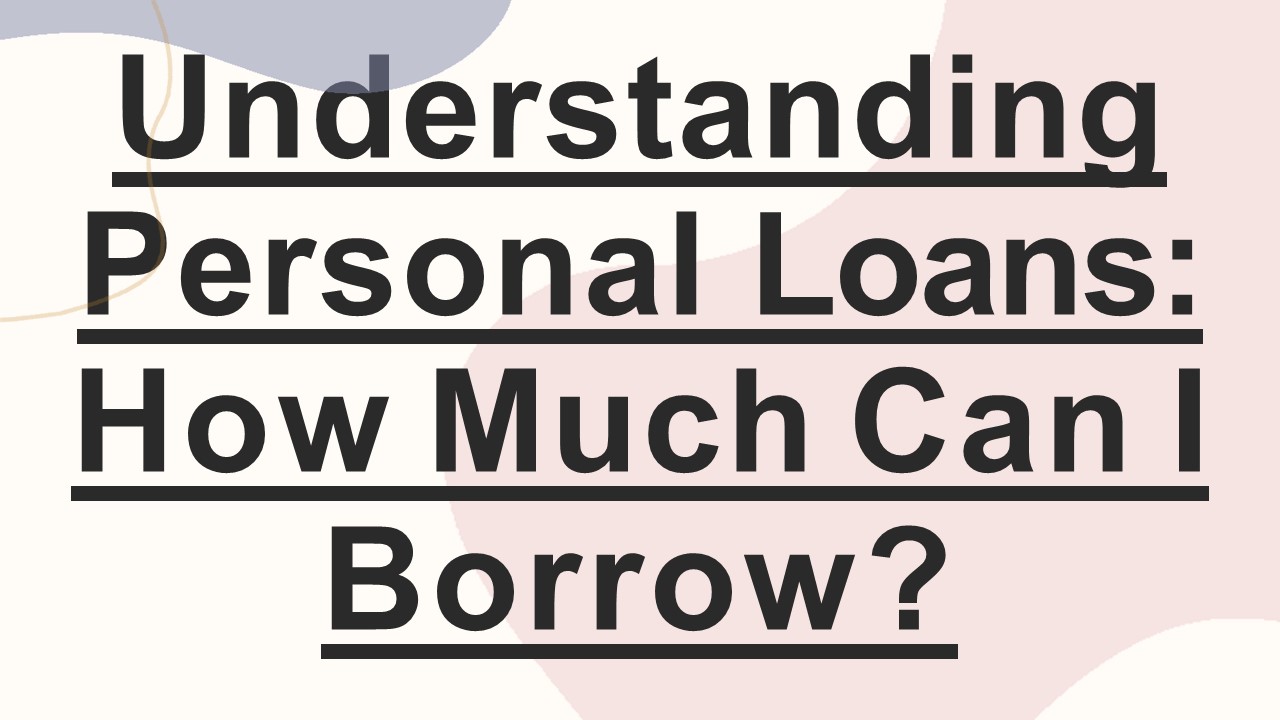Understanding Personal Loans: How Much Can I Borrow? - PowerPoint PPT Presentation
Title:
Understanding Personal Loans: How Much Can I Borrow?
Description:
– PowerPoint PPT presentation
Number of Views:1
Title: Understanding Personal Loans: How Much Can I Borrow?
1
Understanding Personal Loans How Much Can I
Borrow?
2
(No Transcript)
3
Personal loans are a very helpful solution if you
are looking for a quick way to finance large
expenses. This type of installment loan allows
you to borrow a lump sum and repay it gradually
over a long period of time. Plus, they are
usually unsecured, meaning you wont have to use
your house or an alternative asset as
collateral. A personal loan can finance any type
of expense. For instance, some popular reasons
why people take out personal loans.
4
The maximum sum available for an unsecured
personal loan varies from lender to lender.
Typically, creditors set the maximum loan amount
between 40,000 and 50,000. Yet some providers
have a higher maximum limit. For example, with a
Level Lending personal loan, you can borrow up
to 55,000. Of course, its never advisable to
borrow more money than you actually need. After
applying for a loan, your provider will let you
know the maximum amount you qualify for. Yet you
shouldnt feel like you have to borrow the entire
sum.
5
Lets say you are planning to undergo a certain
medical treatment. The cost may vary based on
your choice of clinic, doctor, or treatment
method. Your main priority should be deciding
which option will impact your health best. It
would be unwise to go for the most expensive
treatment just because your loan provider lets
you borrow that amount. Moreover, the total loan
amount available shouldnt be the only factor
you consider when evaluating lenders. You should
also rate each loan provider in terms of.
6
A credit score measures your creditworthiness by
summarizing your open accounts and current debt
obligations. The FICO score is the most commonly
used credit score system by personal loan
lenders in the United States. At any given time,
a borrowers credit score can be between 250 and
850, with higher values indicating higher
creditworthiness. Your score tends to increase
when you meet your payment deadlines or reduce
your credit utilization rate. In contrast,
missing payments, increasing your credit
utilization, and applying for new loans or
credit cards will harm your score.
7
According to Forbes Advisor a FICO score below
580 is seen as poor a FICO score between 580 and
670 is seen as fair a FICO score between 670 and
740 is seen as good a FICO score between 740 and
800 is seen as very good a FICO score above 800
is seen as exceptional Your credit score doesnt
just impact the lenders decision to
accept/reject your personal loan application and
your interest rate. It can also affect the total
amount your creditor lets you borrow.
8
According to Wallet Hub, you should have a credit
score of at least 660 to apply for a 20,000
personal loan. Many finance websites provide
data on the credit score required to apply for a
personal loan with different lenders. Yet keep
in mind that this is usually the score needed to
apply for the lower range amounts offered by that
particular lender. So, if a lender offers
personal loans between 3,000 and 45,000, a
credit score of 660 may be enough to apply for a
10,000 loan but not a 30,000 loan.
9
There are other solutions to consider if you have
bad or poor credit and the amount you need to
borrow is too high for your current credit
score. For example, you could consider a secured
loan, which lets you borrow money by using
certain assets as collateral. Other alternatives
include credit union loans and payday
loans. Keep in mind that certain unsecured loan
providers offer services to borrowers with bad
credit. They may not offer the total sum you
need, but you can at least finance part of your
planned expenses (and find alternative solutions
for the remaining share).
10
- Thank You
https//levelfinancing.com/personal-
loans-how-much-can-i-borrow/































